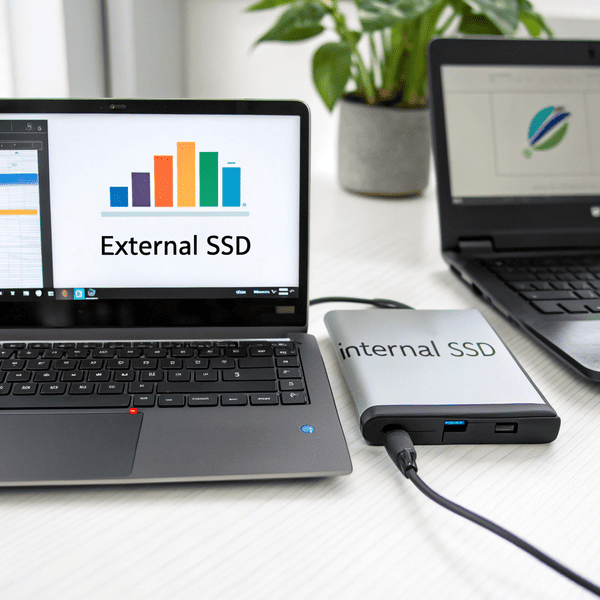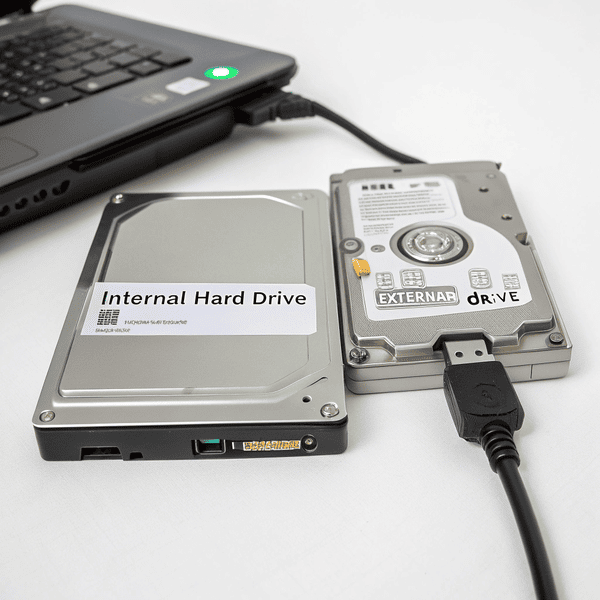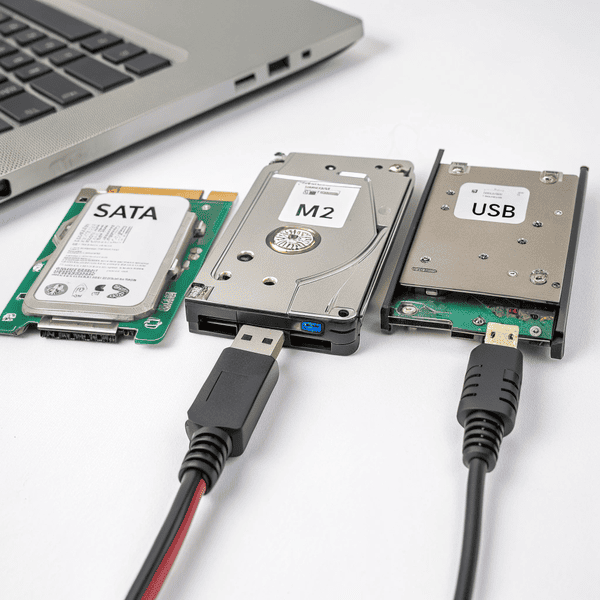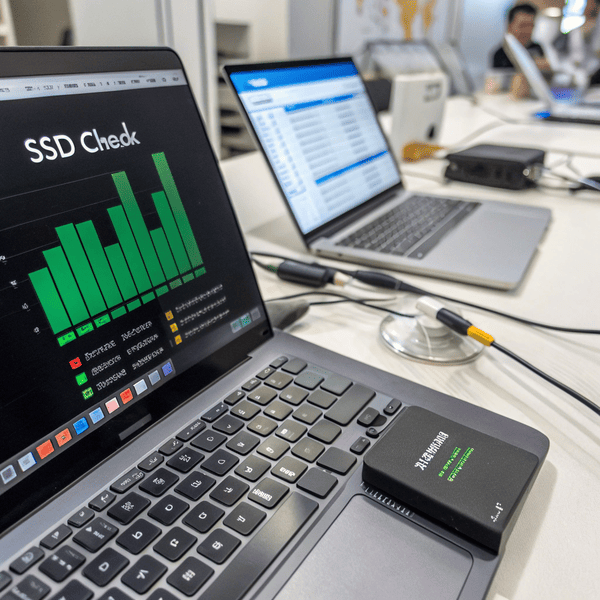Most users see external SSDs promising top speeds, but are they really as fast as internal SSDs? I had the same question when I first relied on external drives for my design projects.
External SSDs are not always as fast as internal SSDs because of connection limitations, even if they use the same type of memory. External SSDs[^1] are not always as fast as internal SSDs because of connection limitations, even if they use the same type of memory. Interface speed is usually the main bottleneck.
[^1]: Explore this link to understand the benefits of External SSDs, including portability and ease of use.
is usually the main bottleneck.
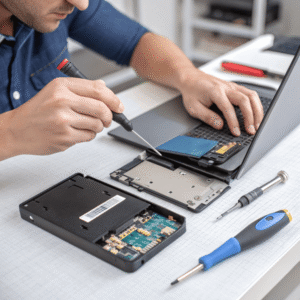
I learned the hard way: moving a project from an internal NVMe SSD to a fast external drive, I noticed slower transfer times, even though both claimed similar speeds. That’s when I understood that the connection makes a huge difference, even with the best hardware.
Are external SSDs as fast as internal?
It’s easy to get excited by the numbers on both types of drives. But speed comes down more to how you connect than the drive itself.
Most external SSDs using USB 3.2 or Thunderbolt can approach the speed of SATA internal SSDs, but high-end internal NVMe SSDs are much faster due to their Most external SSDs using USB 3.2 or Thunderbolt can approach the speed of SATA internal SSDs, but high-end internal NVMe SSDs[^1] are much faster due to their direct PCIe connection.
[^1]: Discover the advantages of high-end internal NVMe SSDs, including speed and performance, to enhance your storage solutions.
.
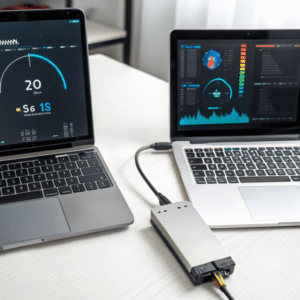
When I first compared speeds, I tested my external SSD through both USB 3.2 and Thunderbolt. Results were good—better than any hard drive—but still not as quick as the NVMe SSD in my main workstation. SATA-based external SSDs nearly matched SATA internal ones if the connection was right. But for the fastest tasks, like editing large 4K videos or managing massive CAD files, internal NVMe SSDs always win. Here is a simple comparison:
| SSD Type | Max Speed (Read/Write) | Typical Use |
|---|---|---|
| Internal NVMe (PCIe Gen4) | 5,000–7,000 MB/s | High-end desktops/laptops |
| Internal SATA SSD | 500–550 MB/s | Older PCs, budget laptops |
| External SSD (Thunderbolt) | 2,800–3,500 MB/s | High-performance external |
| External SSD (USB 3.2 Gen2) | 1,000–1,050 MB/s | General external drives |
The closer the interface is to PCIe, the smaller the difference—otherwise, expect a big speed gap.
Does external SSD increase performance?
It would be great if just plugging in an external SSD made your whole system faster. The reality is a little different.
An external SSD does not directly boost your computer’s overall performance, but it offers faster storage for An external SSD[^1] does not directly boost your computer’s overall performance, but it offers faster storage for file transfers, backups, or running software, compared to external hard drives.
[^1]: Explore the advantages of external SSDs for faster data transfer and improved storage solutions.
, backups, or running software, compared to external hard drives.
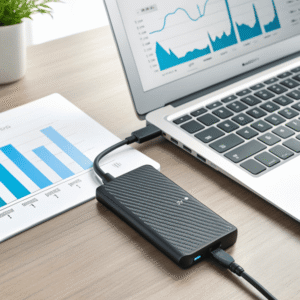
The only time I saw a clear performance boost was when using an external SSD as a scratch disk—like for photo editing or video projects. Copying, moving, or backing up large files is also dramatically quicker. But booting from an external SSD, or trying to run very demanding software, may still be slower than with a fast internal drive, depending on the connection. Here’s how different uses compare:
| Task | Ext. SSD vs HDD | Ext. SSD vs Int. SSD |
|---|---|---|
| File transfer | Much faster | Slightly slower |
| App loading | Faster than HDD | Slower than internal NVMe |
| System speed (OS/boot) | Possible, slower | Best on internal NVMe |
| Backup/restore | Much faster | Nearly the same (SATA SSDs) |
For specific tasks, external SSDs help a lot. For general system speed, they don’t match internal NVMe drive performance.
Can you use an external SSD as an internal SSD?
Many people want to repurpose fast external SSDs or use them as internal storage. I tried this out myself for a quick PC upgrade.
You can sometimes use an external SSD as an internal drive by removing the enclosure and connecting it directly to your motherboard, as long as the drive uses standard You can sometimes use an external SSD[^1] as an internal drive by removing the enclosure and connecting it directly to your motherboard, as long as the drive uses standard SATA or NVMe interfaces.
[^1]: Explore this link to learn the step-by-step process and benefits of using an external SSD as an internal drive.

I once dismantled an older external SSD and installed the bare SATA drive inside a laptop. It worked fine because most external enclosures just hold a standard SSD inside. However, not every external SSD is built for easy disassembly—some are sealed, glued, or use custom parts. It is best to check if your external SSD is a regular SATA or NVMe stick before planning this move. Here’s what to check:
| Check Point | What To Do | Notes |
|---|---|---|
| SSD type | Identify SATA or NVMe inside | Open enclosure carefully |
| Interface | Match to your PC (SATA, M.2) | Not all SSDs are swappable |
| Warranty | Opening may void warranty | Check manufacturer’s policy |
| OS compatibility | May need fresh OS install | Drivers may be different |
If you have a standard drive inside, it’s often a handy upgrade path. Just be aware of potential warranty and installation issues.
Conclusion
External SSDs offer great speed but usually can’t match the fastest internal SSDs due to interface limits. For backup, travel, or rapid file transfer, they’re a top choice.

